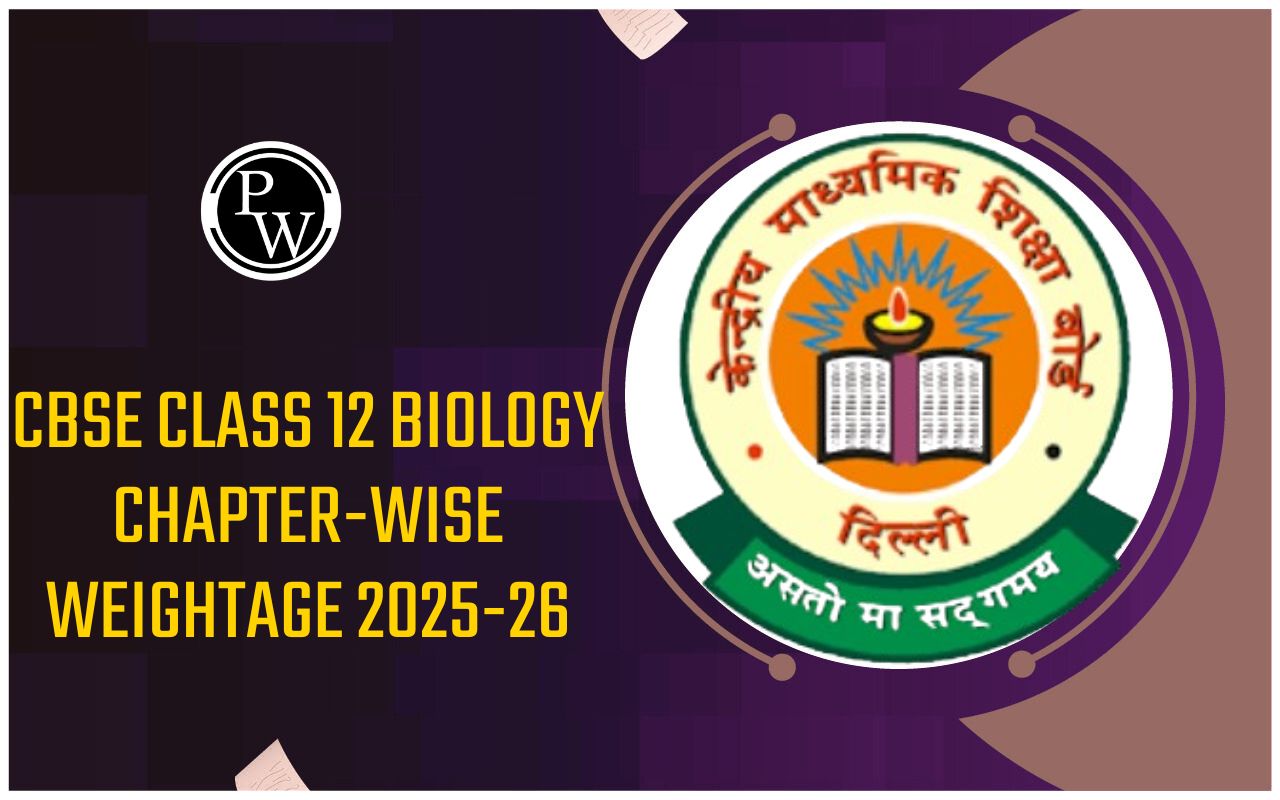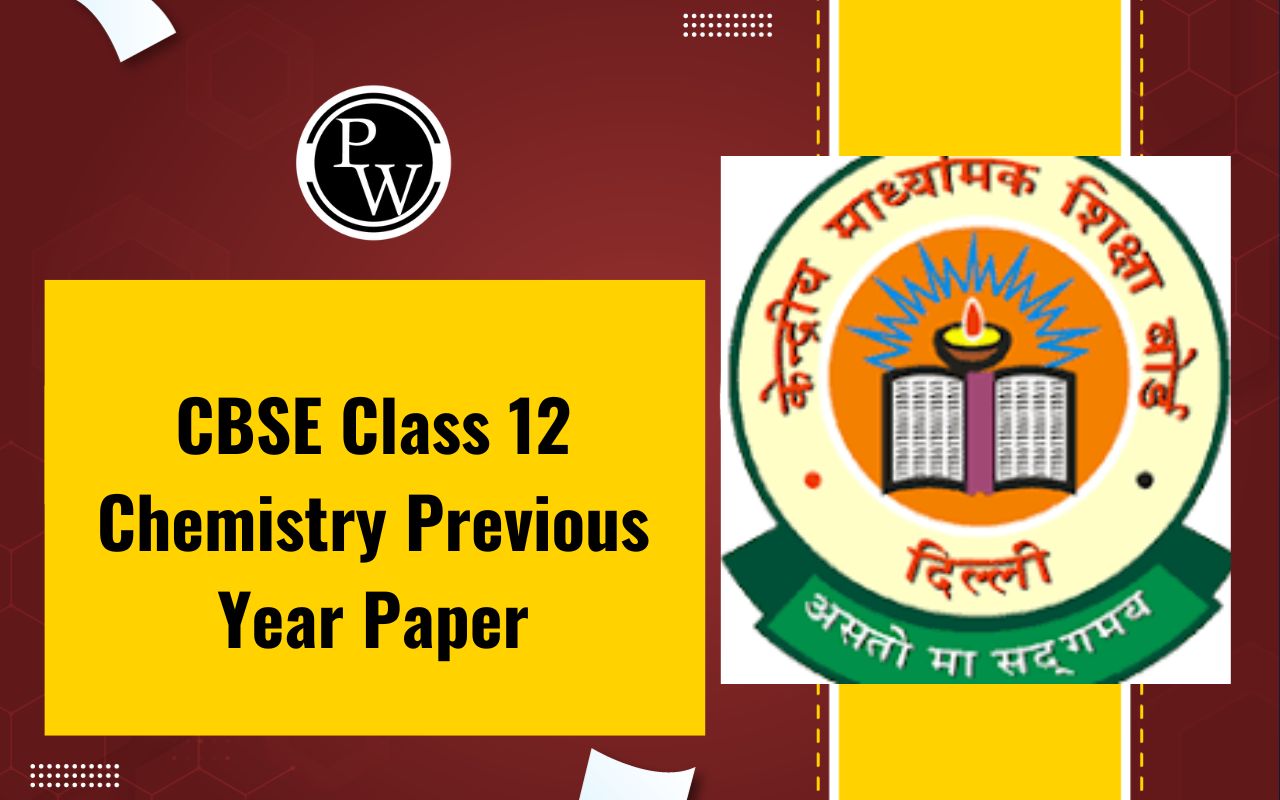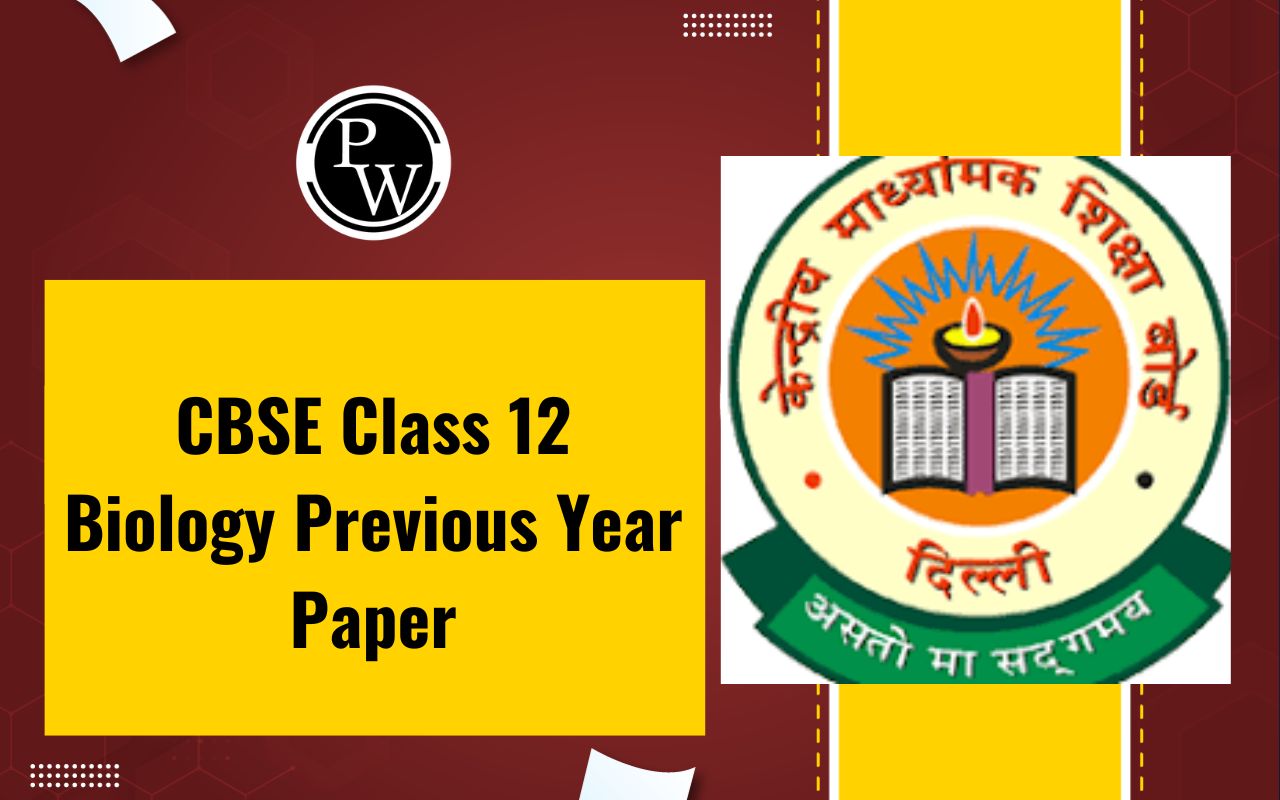
NCERT Solutions for Class 12 Maths Chapter 6 Exercise 6.3 (Applications of Derivatives)
NCERT Solutions for Class 12 Maths Chapter 6 Exercise 6.3 Applications of Derivatives is prepared by the academic team of Physics Wallah. We have prepared NCERT Solutions for all exercise of Chapter 6. Given below is step by step solutions of all questions given in the NCERT Solutions for Class 12 Maths Chapter 6 Exercise 6.3.NCERT Solutions for Class 12 Maths Chapter 6 Exercise 6.3 Overview
NCERT Solutions for Class 12 Maths Chapter 6 Exercise 6..3 covers these important topics. Students are encouraged to review each topic thoroughly in order to fully understand the concepts taught in the chapter and make optimal use of the provided solutions. These solutions are the outcome of the dedicated effort that the Physics Wallah teachers have been doing to aid students in understanding the ideas covered in this chapter. After going over and rehearsing these responses, the goal is for students to easily score outstanding exam results.NCERT Solutions for Class 12 Maths Chapter 6 Exercise 6.3
Solve The Following Questions NCERT Solutions for Class 12 Maths Chapter 6 Exercise 6.3:
Question 1. Find the slope of the tangent to the curvey = 3x 4 − 4x at x = 4. Solution : The given curve isy = 3x 4 − 4x. Then, the slope of the tangent to the given curve at x = 4 is given by,
NCERT Solutions for Class 12 Maths Chapter 6 Miscellaneous Exercise
Question 2. Find the slope of the tangent to the curve ,x ≠ 2 at x = 10.
Solution :
The given curve is
,x ≠ 2 at x = 10.
Solution :
The given curve is
 .
.
 Hence, the slope of the tangent at x = 10 is -1/64
Hence, the slope of the tangent at x = 10 is -1/64
NCERT Solutions for Class 12 Maths Chapter 6 Exercise 6.1
Question 3. Find the slope of the tangent to curve y =x 3 −x + 1 at the point whose x-coordinate is 2. Solution : The given curve is y =x 3 −x + 1
NCERT Solutions for Class 12 Maths Chapter 6 Exercise 6.2
Question 4. Find the slope of the tangent to the curve y =x 3 − 3x + 2 at the point whose x-coordinate is 3. Solution : The given curve is y =x 3 − 3x + 2 Question
5. Find the slope of the normal to the curve x =a cos
3
θ, y = a sin
3
θ at θ = π/4.
Solution :
It is given that x =a cos
3
θ and y =a sin
3
θ.
Question
5. Find the slope of the normal to the curve x =a cos
3
θ, y = a sin
3
θ at θ = π/4.
Solution :
It is given that x =a cos
3
θ and y =a sin
3
θ.

NCERT Solutions for Class 12 Maths Chapter 6 Exercise 6.4
Question 6. Find the slope of the normal to the curvex = 1 − a sinθ, y =b cos 2 θ at θ = π/2. Solution : It is given thatx = 1 −a sinθ and y =b cos 2 θ.
NCERT Solutions for Class 12 Maths Chapter 6 Exercise 6.5
Question 7. Find points at which the tangent to the curve y =x 3 − 3x 2 − 9x + 7 is parallel to thex-axis. Solution : The equation of the given curve is y =x 3 − 3x 2 − 9x + 7 When x = 3, y = (3)
3
− 3 (3)
2
− 9 (3) + 7 = 27 − 27 − 27 + 7 = −20.
When x = −1,y = (−1)
3
− 3 (−1)
2
− 9 (−1) + 7 = −1 − 3 + 9 + 7 = 12.
Hence, the points at which the tangent is parallel to thex-axis are (3, −20) and (−1, 12).
Question
8. Find a point on the curvey = (x − 2)
2
at which the tangent is parallel to the chord joining the points (2, 0) and (4, 4).
Solution :
If a tangent is parallel to the chord joining the points (2, 0) and (4, 4), then the slope of the tangent = the slope of the chord.
The slope of the chord is 4-0/4-2 = 4/2 = 2
Now, the slope of the tangent to the given curve at a point (x,y) is given by,
When x = 3, y = (3)
3
− 3 (3)
2
− 9 (3) + 7 = 27 − 27 − 27 + 7 = −20.
When x = −1,y = (−1)
3
− 3 (−1)
2
− 9 (−1) + 7 = −1 − 3 + 9 + 7 = 12.
Hence, the points at which the tangent is parallel to thex-axis are (3, −20) and (−1, 12).
Question
8. Find a point on the curvey = (x − 2)
2
at which the tangent is parallel to the chord joining the points (2, 0) and (4, 4).
Solution :
If a tangent is parallel to the chord joining the points (2, 0) and (4, 4), then the slope of the tangent = the slope of the chord.
The slope of the chord is 4-0/4-2 = 4/2 = 2
Now, the slope of the tangent to the given curve at a point (x,y) is given by,
 Hence, the required point is (3, 1).
Question
9. Find the point on the curve y =x
3
− 11x + 5 at which the tangent is y =x − 11.
Solution :
The equation of the given curve is y =x
3
− 11x + 5.
The equation of the tangent to the given curve is given as y =x − 11 (which is of the form y =mx +c).
∴Slope of the tangent = 1
Now, the slope of the tangent to the given curve at the point (x,y) is given by, dy/dx = 3x
2
- 11
Then, we have:
Hence, the required point is (3, 1).
Question
9. Find the point on the curve y =x
3
− 11x + 5 at which the tangent is y =x − 11.
Solution :
The equation of the given curve is y =x
3
− 11x + 5.
The equation of the tangent to the given curve is given as y =x − 11 (which is of the form y =mx +c).
∴Slope of the tangent = 1
Now, the slope of the tangent to the given curve at the point (x,y) is given by, dy/dx = 3x
2
- 11
Then, we have:
 Whenx = 2,y = (2)
3
− 11 (2) + 5 = 8 − 22 + 5 = −9.
Whenx = −2,y = (−2)
3
− 11 (−2) + 5 = −8 + 22 + 5 = 19.
Hence, the required points are (2, −9) and (−2, 19). But, both these points should satisfy the equation of the tangent as there would be point of contact between tangent and the curve.
∴ (2, −9) is the required point as (−2, 19) is not satisfying the given equation of tangent.
Question
10. Find the equation of all lines having slope −1 that are tangents to the curve y = 1/x-1 ≠ 1
Solution :
The equation of the given curve is y = 1/x-1 ≠ 1
The slope of the tangents to the given curve at any point (x,y) is given by,
dy/dx = -1/(x-1)
2
If the slope of the tangent is −1, then we have:
Whenx = 2,y = (2)
3
− 11 (2) + 5 = 8 − 22 + 5 = −9.
Whenx = −2,y = (−2)
3
− 11 (−2) + 5 = −8 + 22 + 5 = 19.
Hence, the required points are (2, −9) and (−2, 19). But, both these points should satisfy the equation of the tangent as there would be point of contact between tangent and the curve.
∴ (2, −9) is the required point as (−2, 19) is not satisfying the given equation of tangent.
Question
10. Find the equation of all lines having slope −1 that are tangents to the curve y = 1/x-1 ≠ 1
Solution :
The equation of the given curve is y = 1/x-1 ≠ 1
The slope of the tangents to the given curve at any point (x,y) is given by,
dy/dx = -1/(x-1)
2
If the slope of the tangent is −1, then we have:
 Whenx = 0,y = −1 and when x = 2,y = 1.
Thus, there are two tangents to the given curve having slope −1. These are passing through the points (0, −1) and (2, 1).
∴The equation of the tangent through (0, −1) is given by,
y − (-1 )= −1 (x − 0)
⇒y +1 = −x
⇒y +x +1 = 0
∴The equation of the tangent through (2, 1) is given by,
y − 1 = −1 (x − 2)
⇒y − 1 = −x + 2
⇒y +x − 3 = 0
Hence, the equations of the required lines are y +x + 1 = 0 and y +x − 3 = 0.
Question
11. Find the equation of all lines having slope 2 which are tangents to the curve y = 1/x-3 ≠ 3
Solution :
The equation of the given curve is
y = 1/x-3 ≠ 3
The slope of the tangent to the given curve at any point (x,y) is given by,
Whenx = 0,y = −1 and when x = 2,y = 1.
Thus, there are two tangents to the given curve having slope −1. These are passing through the points (0, −1) and (2, 1).
∴The equation of the tangent through (0, −1) is given by,
y − (-1 )= −1 (x − 0)
⇒y +1 = −x
⇒y +x +1 = 0
∴The equation of the tangent through (2, 1) is given by,
y − 1 = −1 (x − 2)
⇒y − 1 = −x + 2
⇒y +x − 3 = 0
Hence, the equations of the required lines are y +x + 1 = 0 and y +x − 3 = 0.
Question
11. Find the equation of all lines having slope 2 which are tangents to the curve y = 1/x-3 ≠ 3
Solution :
The equation of the given curve is
y = 1/x-3 ≠ 3
The slope of the tangent to the given curve at any point (x,y) is given by,
 Hence, there is no tangent to the given curve having slope 2.
Question
12. Find the equations of all lines having slope 0 which are tangent to the curve
Hence, there is no tangent to the given curve having slope 2.
Question
12. Find the equations of all lines having slope 0 which are tangent to the curve
 .
Solution :
The equation of the given curve is
.
Solution :
The equation of the given curve is
 The slope of the tangent to the given curve at any point (x,y) is given by,
The slope of the tangent to the given curve at any point (x,y) is given by,
 Question
13. Find points on the curve
Question
13. Find points on the curve
 at which the tangents are
(i) parallel tox-axis
(ii) parallel toy-axis
Solution :
The equation of the given curve is
at which the tangents are
(i) parallel tox-axis
(ii) parallel toy-axis
Solution :
The equation of the given curve is
 On differentiating both sides with respect to x, we have:
On differentiating both sides with respect to x, we have:
 Hence, the points at which the tangents are parallel to they-axis are (3, 0) and (− 3, 0).
Question
14. Find the equations of the tangent and normal to the given curves at the indicated points:
(i) y =x
4
− 6x
3
+ 13x
2
− 10x + 5 at (0, 5)
(ii) y =x
4
− 6x
3
+ 13x
2
− 10x + 5 at (1, 3)
(iii) y =x
3
at (1, 1)
(iv) y =x
2
at (0, 0)
(v) x = cost,y = sint at ,t = π/4
Solution :
(i) The equation of the curve is y = x
4
− 6x
3
+ 13x
2
− 10x + 5.
On differentiating with respect tox, we get:
Hence, the points at which the tangents are parallel to they-axis are (3, 0) and (− 3, 0).
Question
14. Find the equations of the tangent and normal to the given curves at the indicated points:
(i) y =x
4
− 6x
3
+ 13x
2
− 10x + 5 at (0, 5)
(ii) y =x
4
− 6x
3
+ 13x
2
− 10x + 5 at (1, 3)
(iii) y =x
3
at (1, 1)
(iv) y =x
2
at (0, 0)
(v) x = cost,y = sint at ,t = π/4
Solution :
(i) The equation of the curve is y = x
4
− 6x
3
+ 13x
2
− 10x + 5.
On differentiating with respect tox, we get:
 (ii) The equation of the curve is y = x
4
− 6x
3
+ 13x
2
− 10x + 5.
On differentiating with respect tox, we get:
(ii) The equation of the curve is y = x
4
− 6x
3
+ 13x
2
− 10x + 5.
On differentiating with respect tox, we get:
 (iii) The equation of the curve isy =x
3
.
On differentiating with respect tox, we get:
(iii) The equation of the curve isy =x
3
.
On differentiating with respect tox, we get:
 (iv) The equation of the curve isy =x
2
.
On differentiating with respect tox, we get:
(iv) The equation of the curve isy =x
2
.
On differentiating with respect tox, we get:
 (v) The equation of the curve is x = cost, y = sint.
(v) The equation of the curve is x = cost, y = sint.
 Question
15. Find the equation of the tangent line to the curve y = x
2
− 2x + 7 which is
(a) parallel to the line 2x −y + 9 = 0
(b) perpendicular to the line 5y − 15x = 13.
Solution :
The equation of the given curve is y = x
2
− 2x + 7
On differentiating with respect tox, we get:
dy/dx = 2x - 2
(a) The equation of the line is 2x −y + 9 = 0.
2x −y + 9 = 0⇒y = 2x+ 9
This is of the formy = mx+c.
∴Slope of the line = 2
If a tangent is parallel to the line 2x −y + 9 = 0, then the slope of the tangent is equal to the slope of the line.
Therefore, we have:
2 = 2x − 2
2x = 4
x = 2
Now,x = 2
y = 4 − 4 + 7 = 7
Thus, the equation of the tangent passing through (2, 7) is given by,
y - 7 = 2(x - 2)
y - 2x - 3 = 0
Hence, the equation of the tangent line to the given curve (which is parallel to line 2x −y + 9 = 0) is y - 2x - 3 = 0.
(b) The equation of the line is 5y − 15x = 13.
5y − 15x = 13⇒ y = 3x + 13/5
This is of the formy =mx+c.
∴Slope of the line = 3
If a tangent is perpendicular to the line 5y − 15x = 13, then the slope of the tangent is -1/slope of the line = -1/3
Question
15. Find the equation of the tangent line to the curve y = x
2
− 2x + 7 which is
(a) parallel to the line 2x −y + 9 = 0
(b) perpendicular to the line 5y − 15x = 13.
Solution :
The equation of the given curve is y = x
2
− 2x + 7
On differentiating with respect tox, we get:
dy/dx = 2x - 2
(a) The equation of the line is 2x −y + 9 = 0.
2x −y + 9 = 0⇒y = 2x+ 9
This is of the formy = mx+c.
∴Slope of the line = 2
If a tangent is parallel to the line 2x −y + 9 = 0, then the slope of the tangent is equal to the slope of the line.
Therefore, we have:
2 = 2x − 2
2x = 4
x = 2
Now,x = 2
y = 4 − 4 + 7 = 7
Thus, the equation of the tangent passing through (2, 7) is given by,
y - 7 = 2(x - 2)
y - 2x - 3 = 0
Hence, the equation of the tangent line to the given curve (which is parallel to line 2x −y + 9 = 0) is y - 2x - 3 = 0.
(b) The equation of the line is 5y − 15x = 13.
5y − 15x = 13⇒ y = 3x + 13/5
This is of the formy =mx+c.
∴Slope of the line = 3
If a tangent is perpendicular to the line 5y − 15x = 13, then the slope of the tangent is -1/slope of the line = -1/3
 Thus, the equation of the tangent passing through
Thus, the equation of the tangent passing through
 is given by,
is given by,
 Hence, the equation of the tangent line to the given curve (which is perpendicular to line 5y − 15x = 13) is 36y + 12x - 227 = 0
Question
16. Show that the tangents to the curvey = 7x
3
+ 11 at the points wherex = 2 and x = −2 are parallel.
Solution :
The equation of the given curve is y = 7x
3
+ 11.
Hence, the equation of the tangent line to the given curve (which is perpendicular to line 5y − 15x = 13) is 36y + 12x - 227 = 0
Question
16. Show that the tangents to the curvey = 7x
3
+ 11 at the points wherex = 2 and x = −2 are parallel.
Solution :
The equation of the given curve is y = 7x
3
+ 11.
 It is observed that the slopes of the tangents at the points where x = 2 and x = −2 are equal.
Hence, the two tangents are parallel.
Question
17. Find the points on the curvey =x
3
at which the slope of the tangent is equal to they-coordinate of the point.
Solution :
The equation of the given curve isy =x
3
.
It is observed that the slopes of the tangents at the points where x = 2 and x = −2 are equal.
Hence, the two tangents are parallel.
Question
17. Find the points on the curvey =x
3
at which the slope of the tangent is equal to they-coordinate of the point.
Solution :
The equation of the given curve isy =x
3
.
 The slope of the tangent at the point (x,y) is given by,
The slope of the tangent at the point (x,y) is given by,
 When the slope of the tangent is equal to they-coordinate of the point, theny = 3x
2
.
Also, we havey =x
3
.
∴3x
2
=x
3
⇒x
2
(x − 3) = 0
⇒x = 0,x = 3
Whenx = 0, theny = 0 and whenx = 3, theny = 3(3)
2
= 27.
Hence, the required points are (0, 0) and (3, 27).
Question
18. For the curvey = 4x
3
− 2x
5
, find all the points at which the tangents passes through the origin.
Solution :
The equation of the given curve isy = 4x
3
− 2x
5
.
When the slope of the tangent is equal to they-coordinate of the point, theny = 3x
2
.
Also, we havey =x
3
.
∴3x
2
=x
3
⇒x
2
(x − 3) = 0
⇒x = 0,x = 3
Whenx = 0, theny = 0 and whenx = 3, theny = 3(3)
2
= 27.
Hence, the required points are (0, 0) and (3, 27).
Question
18. For the curvey = 4x
3
− 2x
5
, find all the points at which the tangents passes through the origin.
Solution :
The equation of the given curve isy = 4x
3
− 2x
5
.
 When x = 1,y = 4 (1)3 − 2 (1)5 = 2.
When x = −1,y = 4 (−1)3 − 2 (−1)5 = −2.
Hence, the required points are (0, 0), (1, 2), and (−1, −2).
Question
19. Find the points on the curve x
2
+y
2
− 2x − 3 = 0 at which the tangents are parallel to the x-axis.
Solution :
The equation of the given curve is x
2
+y
2
− 2x − 3 = 0.
On differentiating with respect to x, we have:
When x = 1,y = 4 (1)3 − 2 (1)5 = 2.
When x = −1,y = 4 (−1)3 − 2 (−1)5 = −2.
Hence, the required points are (0, 0), (1, 2), and (−1, −2).
Question
19. Find the points on the curve x
2
+y
2
− 2x − 3 = 0 at which the tangents are parallel to the x-axis.
Solution :
The equation of the given curve is x
2
+y
2
− 2x − 3 = 0.
On differentiating with respect to x, we have:
 But, x
2
+y
2
− 2x − 3 = 0 for x = 1.
y
2
= 4⇒ y = ± 2
Hence, the points at which the tangents are parallel to thex-axis are (1, 2) and (1, −2).
Question
20. Find the equation of the normal at the point (am
2
, am
3
) for the curve ay
2
=x
3
.
Solution :
The equation of the given curve is ay
2
=x
3
.
On differentiating with respect tox, we have:
But, x
2
+y
2
− 2x − 3 = 0 for x = 1.
y
2
= 4⇒ y = ± 2
Hence, the points at which the tangents are parallel to thex-axis are (1, 2) and (1, −2).
Question
20. Find the equation of the normal at the point (am
2
, am
3
) for the curve ay
2
=x
3
.
Solution :
The equation of the given curve is ay
2
=x
3
.
On differentiating with respect tox, we have:
 Question
21. Find the equation of the normals to the curve y =x
3
+ 2x+ 6 which are parallel to the line x + 14y + 4 = 0.
Solution :
The equation of the given curve is y =x
3
+ 2x + 6.
The slope of the tangent to the given curve at any point (x,y) is given by,
Question
21. Find the equation of the normals to the curve y =x
3
+ 2x+ 6 which are parallel to the line x + 14y + 4 = 0.
Solution :
The equation of the given curve is y =x
3
+ 2x + 6.
The slope of the tangent to the given curve at any point (x,y) is given by,
 ∴ Slope of the normal to the given curve at any point (x,y) =
∴ Slope of the normal to the given curve at any point (x,y) =
 The equation of the given line is x + 14y + 4 = 0.
x + 14y + 4 = 0⇒
The equation of the given line is x + 14y + 4 = 0.
x + 14y + 4 = 0⇒
 (which is of the form y =mx +c)
∴Slope of the given line = -1/14
If the normal is parallel to the line, then we must have the slope of the normal being equal to the slope of the line.
(which is of the form y =mx +c)
∴Slope of the given line = -1/14
If the normal is parallel to the line, then we must have the slope of the normal being equal to the slope of the line.
 When x = 2, y = 8 + 4 + 6 = 18.
When x = −2, y = − 8 − 4 + 6 = −6.
Therefore, there are two normals to the given curve with slope -1/14 and passing through the points (2, 18) and (−2, −6).
Thus, the equation of the normal through (2, 18) is given by,
When x = 2, y = 8 + 4 + 6 = 18.
When x = −2, y = − 8 − 4 + 6 = −6.
Therefore, there are two normals to the given curve with slope -1/14 and passing through the points (2, 18) and (−2, −6).
Thus, the equation of the normal through (2, 18) is given by,
 And, the equation of the normal through (−2, −6) is given by,
And, the equation of the normal through (−2, −6) is given by,
 Hence, the equations of the normals to the given curve (which are parallel to the given line) are x + 14y + 86 = 0.
Question
22. Find the equations of the tangent and normal to the parabola y
2
= 4ax at the point (at
2
, 2at).
Solution :
The equation of the given parabola is y
2
= 4ax.
On differentiating y
2
= 4ax with respect to x, we have:
Hence, the equations of the normals to the given curve (which are parallel to the given line) are x + 14y + 86 = 0.
Question
22. Find the equations of the tangent and normal to the parabola y
2
= 4ax at the point (at
2
, 2at).
Solution :
The equation of the given parabola is y
2
= 4ax.
On differentiating y
2
= 4ax with respect to x, we have:
 Question
23. Prove that the curves x =y
2
and xy = k cut at right angles if 8k
2
= 1. [Hint: Two curves intersect at right angle if the tangents to the curves at the point of intersection are perpendicular to each other.]
Solution :
The equations of the given curves are given as x =y
2
and xy = k
Putting x =y
2
in xy =k, we get:
Question
23. Prove that the curves x =y
2
and xy = k cut at right angles if 8k
2
= 1. [Hint: Two curves intersect at right angle if the tangents to the curves at the point of intersection are perpendicular to each other.]
Solution :
The equations of the given curves are given as x =y
2
and xy = k
Putting x =y
2
in xy =k, we get:

 Question
24. Find the equations of the tangent and normal to the hyperbola
Question
24. Find the equations of the tangent and normal to the hyperbola
 at the point (x
0
,y
0
)
Solution :
Differentiating
at the point (x
0
,y
0
)
Solution :
Differentiating
 with respect to x, we have:
with respect to x, we have:
 Therefore, the slope of the tangent at
Therefore, the slope of the tangent at
 Then, the equation of the tangent at (x
0
,y
0
)
is given by,
Then, the equation of the tangent at (x
0
,y
0
)
is given by,
 Question
25. Find the equation of the tangent to the curve y = √3x - 2 which is parallel to the line 4x − 2y + 5 = 0.
Solution :
The equation of the given curve is y = √3x - 2
The slope of the tangent to the given curve at any point (x,y) is given by,
Question
25. Find the equation of the tangent to the curve y = √3x - 2 which is parallel to the line 4x − 2y + 5 = 0.
Solution :
The equation of the given curve is y = √3x - 2
The slope of the tangent to the given curve at any point (x,y) is given by,
 The equation of the given line is 4x − 2y + 5 = 0.
4x − 2y + 5 = 0⇒y = 2x + 5/2 (which is of the form y = mx + c)
∴Slope of the line = 2
Now, the tangent to the given curve is parallel to the line 4x − 2y − 5 = 0 if the slope of the tangent is equal to the slope of the line.
The equation of the given line is 4x − 2y + 5 = 0.
4x − 2y + 5 = 0⇒y = 2x + 5/2 (which is of the form y = mx + c)
∴Slope of the line = 2
Now, the tangent to the given curve is parallel to the line 4x − 2y − 5 = 0 if the slope of the tangent is equal to the slope of the line.
 ∴Equation of the tangent passing through the point(41/48, 3/4) is given by,
∴Equation of the tangent passing through the point(41/48, 3/4) is given by,
 Hence, the equation of the required tangent is 48x - 24y = 23
Question
26. The slope of the normal to the curve y = 2x
2
+ 3 sinx at x = 0 is
(A) 3
(B)1/3
(C) −3
(D) -1/3
Solution :
The equation of the given curve is y = 2x
2
+ 3 sinx
Slope of the tangent to the given curve at x = 0 is given by,
Hence, the equation of the required tangent is 48x - 24y = 23
Question
26. The slope of the normal to the curve y = 2x
2
+ 3 sinx at x = 0 is
(A) 3
(B)1/3
(C) −3
(D) -1/3
Solution :
The equation of the given curve is y = 2x
2
+ 3 sinx
Slope of the tangent to the given curve at x = 0 is given by,
 Hence, the slope of the normal to the given curve at x = 0 is
Hence, the slope of the normal to the given curve at x = 0 is
 The correct answer is D.
Question
27. The liney =x + 1 is a tangent to the curve y
2
= 4x at the point
(A) (1, 2)
(B) (2, 1)
(C) (1, −2)
(D) (−1, 2)
Solution :
The equation of the given curve is y
2
= 4x
Differentiating with respect tox, we have:
The correct answer is D.
Question
27. The liney =x + 1 is a tangent to the curve y
2
= 4x at the point
(A) (1, 2)
(B) (2, 1)
(C) (1, −2)
(D) (−1, 2)
Solution :
The equation of the given curve is y
2
= 4x
Differentiating with respect tox, we have:
 Therefore, the slope of the tangent to the given curve at any point (x,y) is given by,
dy/dx = 2/y
The given line isy = x + 1 (which is of the form y =mx +c)
∴ Slope of the line = 1
The liney = x + 1 is a tangent to the given curve if the slope of the line is equal to the slope of the tangent. Also, the line must intersect the curve.
Thus, we must have:
Therefore, the slope of the tangent to the given curve at any point (x,y) is given by,
dy/dx = 2/y
The given line isy = x + 1 (which is of the form y =mx +c)
∴ Slope of the line = 1
The liney = x + 1 is a tangent to the given curve if the slope of the line is equal to the slope of the tangent. Also, the line must intersect the curve.
Thus, we must have:
 Hence, the line y =x + 1 is a tangent to the given curve at the point (1, 2).
The correct answer is A.
Hence, the line y =x + 1 is a tangent to the given curve at the point (1, 2).
The correct answer is A.
NCERT Solutions For Class 12 Maths Chapter 6 Exercise 6.3 FAQs
What is derivative of cos?
Therefore, the derivative of cos x is -sin x.
What is sum of n numbers?
Sn = n(n+1)/2
Can you separate derivatives?
We know that we can split derivatives up along addition because we proved it. But, without proving it, that's not an obvious result. Likewise, it's not obvious that we can split derivatives up along multiplication.
What is COSX equal to?
The important cosine formulas are as follows: cos x = (adjacent side) / (hypotenuse) cos x = 1 / (sec x) cos x = ± √(1 - sin2x)
Why does sin differentiate to cos?
For example, the derivative of the sine function is written sin′(a) = cos(a), meaning that the rate of change of sin(x) at a particular angle x = a is given by the cosine of that angle.
Talk to a counsellorHave doubts? Our support team will be happy to assist you!

Check out these Related Articles
Free Learning Resources
PW Books
Notes (Class 10-12)
PW Study Materials
Notes (Class 6-9)
Ncert Solutions
Govt Exams
Class 6th to 12th Online Courses
Govt Job Exams Courses
UPSC Coaching
Defence Exam Coaching
Gate Exam Coaching
Other Exams
Know about Physics Wallah
Physics Wallah is an Indian edtech platform that provides accessible & comprehensive learning experiences to students from Class 6th to postgraduate level. We also provide extensive NCERT solutions, sample paper, NEET, JEE Mains, BITSAT previous year papers & more such resources to students. Physics Wallah also caters to over 3.5 million registered students and over 78 lakh+ Youtube subscribers with 4.8 rating on its app.
We Stand Out because
We provide students with intensive courses with India’s qualified & experienced faculties & mentors. PW strives to make the learning experience comprehensive and accessible for students of all sections of society. We believe in empowering every single student who couldn't dream of a good career in engineering and medical field earlier.
Our Key Focus Areas
Physics Wallah's main focus is to make the learning experience as economical as possible for all students. With our affordable courses like Lakshya, Udaan and Arjuna and many others, we have been able to provide a platform for lakhs of aspirants. From providing Chemistry, Maths, Physics formula to giving e-books of eminent authors like RD Sharma, RS Aggarwal and Lakhmir Singh, PW focuses on every single student's need for preparation.
What Makes Us Different
Physics Wallah strives to develop a comprehensive pedagogical structure for students, where they get a state-of-the-art learning experience with study material and resources. Apart from catering students preparing for JEE Mains and NEET, PW also provides study material for each state board like Uttar Pradesh, Bihar, and others
Copyright © 2025 Physicswallah Limited All rights reserved.









